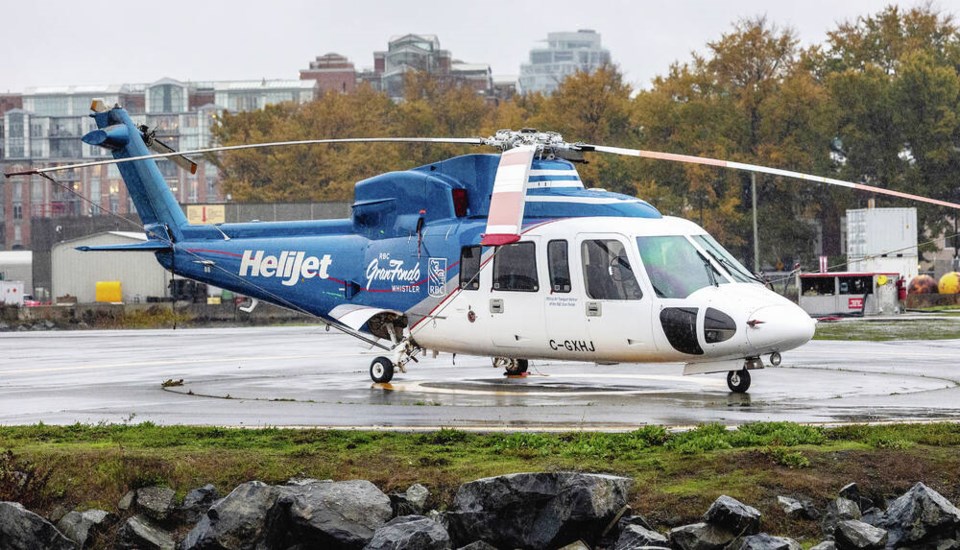An audio recording of communication between air traffic control and a reveals how quickly the pilots regained control of their aircraft.
The recording, , shows the beginning of the Sikorsky S-76 helicopter flight from Vancouver to Victoria was routine. The helicopter, which typically travels about 4,000 feet above sea level, was flying in the clouds, which meant the the pilots were flying under instrument flight rules.
The first indication anything is wrong is when one of the pilots exclaims: “Oh s--t.”
The expletive is followed by seven or eight seconds of heavy breathing.
“Decouple, decouple, decouple,” says one of the pilots. The term means to disengage the autopilot.
“705?” asks the air traffic controller.
“We’re declaring a pan-pan here. We just descended incredible amounts of altitude. We’re still descending. We’re at 1,300,” says one of the pilots.
The air traffic controller advises the helicopter pilots of other flights in the area.
“We’re just climbing and at 2,000 now… We’re level at 2,000 now. 705,” one of the pilot responds.
The air traffic controller advises the pilots that the control tower will keep other traffic out of their way.
“We just had a lightning strike and we descended a bunch. We’d like to request vectors for the airport at YYJ,” says the pilot.
Then the pilots change their mind about landing at Victoria International Airport and decide to land at the heliport in downtown Victoria.
Air traffic control tells them to fly at an altitude of their own discretion.
“Is there anything else I can do for you?” asks the air traffic controller.
“No,” the pilot responds. “Everything is under control. We’re completely VFR [visual flight rules] at this time so we’re heading for the harbour.”
The flight landed safely.
Helijet chief executive officer Daniel Sitnam said the pilots reported hearing “a very large bang and a white light.” They continued to fly, but lost the instruments in their cockpit, descending through 3,000 feet of cloud without instruments.
Sitnam commended the flight crew for their quick actions.
“From a lightning strike, losing your instruments and being in cloud at the same time with no reference, we’re pretty proud of our crew, proud of the company and we’re very, very pleased that everyone is on the ground safe and sound,” he said.
Sitnam estimated the helicopter was about 50 kilometres from Victoria Harbour when it was struck by lightning.
Helijet advised the Transportation Safety Board of the lightning strike. The board is pulling the cockpit voice recorders and collecting data, and will probably do its own investigation in the days to come, said Sitnam.
Environment Canada had warned of a risk of thunderstorms Tuesday morning when the helicopter was struck by lightning.
Meteorologist Armel Castellan said Environment Canada produces two aviation forecasts, including one specifically for small planes and helicopters on lower-elevation flights on the B.C. coast.
“Both of those products had the thunderstorm icon on it, the description saying isolated cumulonimbus, a fancy word for thunderstorms, was present in the area,” said Castellan.
The thunderstorm activity was over Vancouver Island and most of the south coast, including the Sunshine Coast, he said.
“The whole area from Vancouver to Victoria was included in the thunderstorm potential there,” said Castellan. “There had been a lightning strike near Bellingham about an hour earlier. That was in our geographical forecast, too.”
Transport Canada said pilots receive significant training in meteorology, so they know how to obtain and assess weather information, including how best to plan their flight to avoid the risk of lightning.
provides information for the risks associated with flying in the vicinity of thunderstorms, and recommends avoiding by at least 20 nautical miles any thunderstorm identified as severe or giving intense radar returns.
>>> To comment on this article, write a letter to the editor: [email protected]




